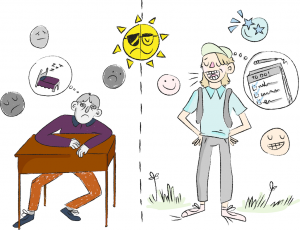Daylight Saving Time is a ‘Spring Forward’ for Student Productivity
March 9, 2020
As Daylight Saving Time (DST)’s annual “spring forward” started on March 8, the debate once again comes to light: should DST be abolished? While critics of DST express concern over the drawbacks of the transition, the benefits in productivity and safety that the change of hour brings ultimately outweighs the temporary disruption.
DST begins every year on the second Sunday of March when clocks move forward an hour and lasts until the first Sunday of November. Originally introduced in World War I to reduce the need for artificial light, DST continues to serve its purpose of increasing the amount of daylight in the evenings in the winter months, when days are shorter. The added natural light in the afternoons promotes higher productivity and may lead to a less sedentary lifestyle.
According to The Washington Post, “we typically spend more awake time in the evenings than in the mornings. We also enjoy many benefits from being awake in the sunshine… vitamin D, increased exercise, increased socializing and overall improvements to mental health come with sunlight.”
Especially for students, DST increases the amount of daylight available after school in the winter months, when days are naturally shorter. Not only does the presence of natural light promote productivity, but it also allows students to commute safely to and from school.
“Irvine is a really safe place, but it just gives me peace of mind when it’s not almost sunset or even dark out right after school,” sophomore Cinta Adhiningrat said. “I come home later than others from school every day, so I feel more safe at home alone while there’s still light out.”
Without DST, it would be dark outside by the time school ends for some students, particularly athletes whose practices extend long after school. The long dark hours pose risks to student drivers; according to the Accident Analysis & Prevention journal, motor vehicle accidents increase by 13% without DST.
The main counterargument against DST is concerns regarding the actual transition during the “spring forward” and “fall back” each year. Critics discuss the potential negative impacts to health that a disrupted sleep schedule may cause.
However, DST transitions occur over weekends to intentionally minimize the disturbance they may cause. Furthermore, the health benefits of less artificial light in the afternoons for half the year outweighs the effect of a temporary disruption twice a year.
For students, DST is a highly beneficial system that protects their safety, productivity and freedom for recreation in the evenings. While the shift in sleep schedule may pose temporary frustration, the long-term advantages of DST ensure that it is a system to be kept.



